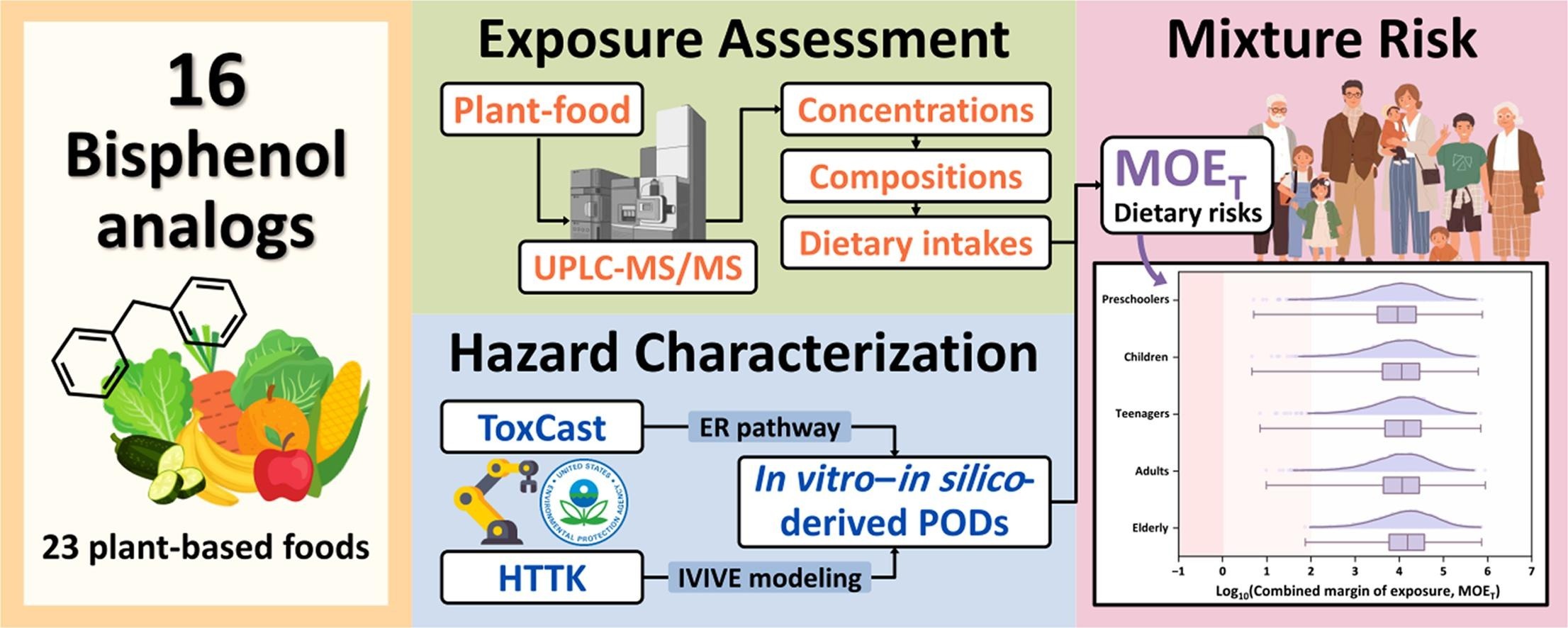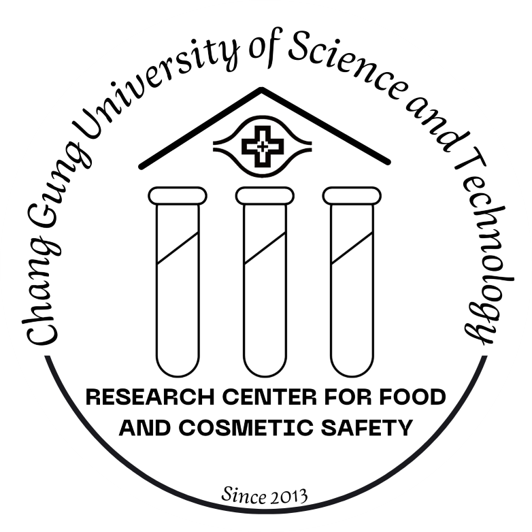Concentrations, Composition Profiles, and In Vitro–In Silico-Based Mixture Risk Assessment of Bisphenol A and its Analogs in Plant-Based Foods

圖文摘要說明
此圖文摘要說明了針對植物性食品中雙酚類化合物的暴露與風險評估流程。研究對象 (左側橘色區塊) 分析了 16 種雙酚類化合物,樣本來源為 23 種植物性食品;研究方法 (中間綠藍色區塊) 結合採用 UPLC-MS/MS 方法的「暴露評估」,以及利用美國環保署 ToxCast 資料庫與 HTTK 模型的「危害特性」分析;混合風險 (右側粉紅色區塊) 採用總體暴露安全邊際 (MOET) 作為指標,評估了不同年齡層的飲食風險。
Abstract
The substitution of bisphenol A (BPA) with structurally similar analogs has raised concerns due to their comparable estrogenic activities. Considering the high consumption of plant-based foods, assessing the risks posed by bisphenols (BPs) in such dietary sources is essential. However, limited exposure and animal toxicological data on BP analogs hinder comprehensive risk assessments. This study investigated 16 BPs in 23 plant-based foods from Taiwan and estimated their dietary exposure across age groups. High-throughput toxicokinetic modeling was used to convert in vitro ToxCast estrogen receptor (ER) bioactive concentrations into human-equivalent points of departure (PODs), which were compared to PODs derived from animal studies and applied to assess mixture risks through the margin of exposure based on the common ER pathway. In total, 7 BPs were detected, and most samples (85.9 %) contained detectable concentrations. Total concentrations of the 7 BPs (Σ7BP) ranged from 0.06 ± 0.11 ng/g to 26.60 ± 72.18 ng/g, with BPA being the most predominant (63 % of the mean Σ7BP concentrations), followed by bisphenol S (19 %) and 4,4-bisphenol F (13 %). In vitro–in silico-derived PODs were comparable to or even more protective than in vivo animal-derived PODs. For most population groups, combined exposure to multiple BPs from plant-based foods is generally not a risk concern for ER pathway perturbation, although potential concerns in worst-case scenarios cannot be excluded. This study advances the understanding of the dietary risks associated with BP mixtures and illustrates the potential of in vitro–in silico approaches for assessing human health risks from environmental contaminants.
Keywords:Bisphenol analogs; Plant-based foods; ToxCast; Estrogen receptor; High-throughput toxicokinetic; Mixture risk assessment

